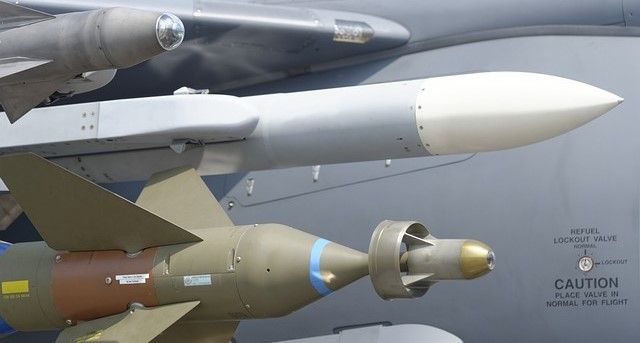Are Cheap Drones the Best Defence for Future Conflicts?
How low-cost drones could be a winning strategy in a war of logistics.

The combination of the increased effectiveness of drones in the defence of Ukraine combined with Washington’s plans to combat potential Chinese aggression has military analysts envisaging a strategy of cheap drone swarms.
American fears of facing and possibly losing any future war with China are very real. China’s military power, especially its air force and navy, have grown over the past decade. With the advantage of fighting in its own backyard, many military experts believe that China could now capture and control islands in the South China Sea (including Taiwan), as well as others within its sphere of influence (such as those contested by the Philippines, Japan, and Russia).
As Clint Hinote, a lieutenant general in the U.S. Air Force, explained when asked to summarise his experience of fighting the Chinese in the Western Pacific, “Not only were we losing the wargames, we were losing the wargames faster.”
With U.S. military investment gearing up to fighting in the South China Sea, does Taiwan’s best defence lie in cheap drones?
This has made experts at the Pentagon begin to think outside of the box. Finding radical and alternative ways to defend America’s interests against a growing Chinese military power. Given the success that drones (even commercially available models) have had in defending Kyiv, perhaps they hold the answer to defending Taipei.

Part of the wargaming lesson was the long-term nature of a clash between a superpower America and a superpower China. This means that the interconnected nature of U.S. military production with its global supply networks and extended lines of logistics/communication will be very susceptible to attack in any future near-peer conflict.
As was seen in America’s engagements in Iraq and Afghanistan, despite the overwhelming superiority of the American war machine, cheap machine guns and homemade bombs made insurgent forces, like the Taliban, a competent opponent.
The long supply chain and countless, highly intricate parts required to build a modern jet fighter such as an F-35, mean that production could quickly be ground to a halt by an enemy destroying a single assembly part (via lone attack or terrorism). An enemy would not have to fly into America to disrupt logistical supply, but could instead damage ports, airbases, or facilities that function as a single link in aid being sent to Taiwan or other location thousands of kilometres from U.S. soil.
Alternatively, China could diplomatically persuade a nation to discontinue supplying parts or raw materials to the U.S. – a very real possibility given China’s influence in raw material laden Africa.
As Lt. Col. Ernest ‘Nest’ Cage, a senior defense fellow at the think tank ‘Center for a New American Security’ writes, “The idea of securing every inch of a complex weapon system’s supply chain — while an imperative — is perhaps a near-impossible task. A forward-thinking way to solve this problem is to design and produce war machines that are as simplistic as a paper airplane and as easily replaced as a toy tank, but highly lethal.”

It is a strategy that was adopted during the Second World War when relatively cheap gliders were deployed to deliver troops to the battlefield in place of expensive transport planes and parachutes.
Adopting this thinking toward military hardware which is ‘simplistic in design, rapidly reproducible, and highly lethal’ could be essential to winning future wars.
In this way, drones deployed widely and at low cost could pose a challenge that experts believe Beijing would be unable to resolve. With so many cheap drones, China may be compelled to overlook the smallest, least expensive ones, allowing them to operate in the warzone unhindered. Here they could provide surveillance and targeting services for other weapons-delivery systems, either airborne, land-based, or maritime.

Alternately, China may try to kill the drones by using expensive defence systems. If it continually fires a $20,000 missile to destroy a $1,000 drone, then the U.S. will be winning the long-term economic war.
As Hinote concludes, “They either have to expend very expensive missiles to shoot them down, or they have to suffer the consequences of whatever they’re doing.”
Following this logic, cheap drones (and plenty of them) may be Taiwan’s and even Europe’s best defence.
Photo credit: Andrew West from Pixabay, Kris K, David Mark, & Dr. Georg Wietschorke

